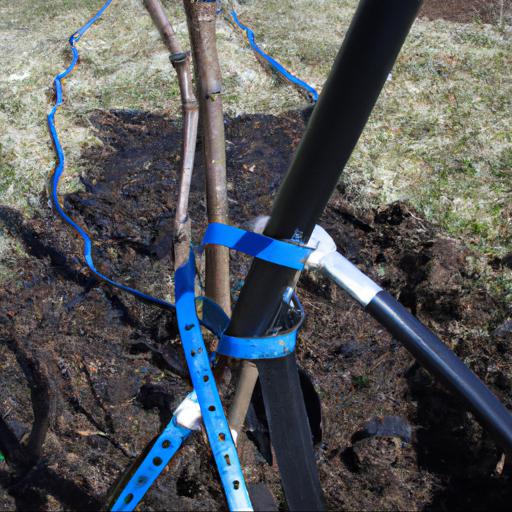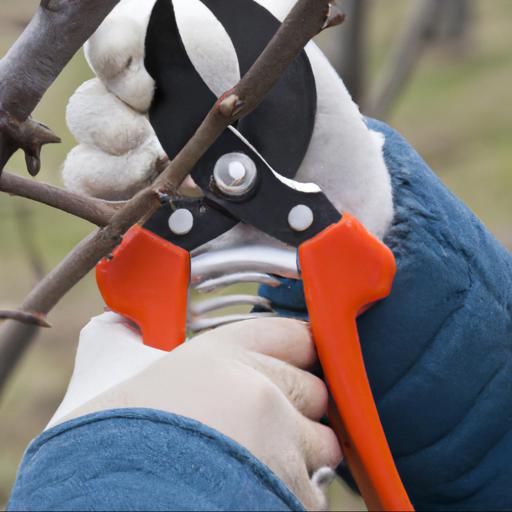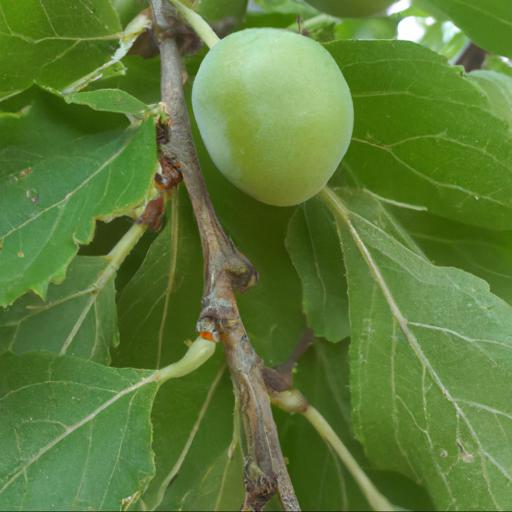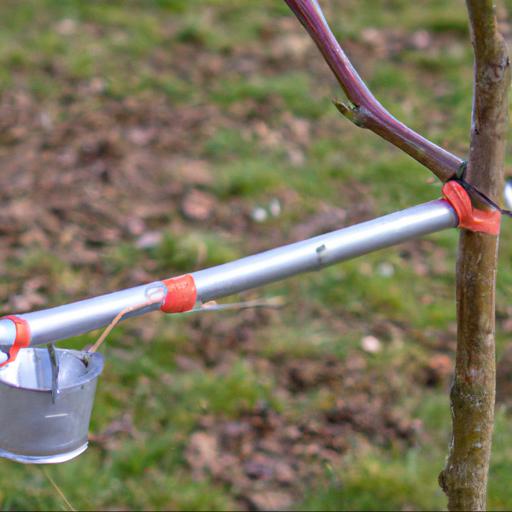Fruit trees are a great way to add beauty and flavor to your garden. But to get the most out of your fruit trees, you need to train them properly. In this blog, we’ll explore three ways to train a fruit tree so you can get the most out of your fruit tree.
We’ll look at pruning, training and tying, and trellising, and discuss the benefits and drawbacks of each method. With the right training, your fruit tree will be healthier and produce more delicious fruit for years to come.
Three ways to train a fruit tree

Training a fruit tree is a vital part of establishing a successful fruit-bearing garden. Proper training can improve yield and extend the life of the tree while producing larger and higher-quality fruits. Here are three ways to train a fruit tree to become a bountiful and productive tree in the garden.
First, pruning is one of the most important tasks in training a fruit tree. Proper pruning will not only help maintain desirable tree shape and size, but will also direct the tree’s energy and resources to the most productive branches.
Pruning should be done in the late fall or winter when the tree is dormant as it will help control plant growth. It is important to remove any dead or diseased branches or branches that are competing for resources. Also, remove anything that could cause the tree to be top-heavy, and cut any branches that are crisscrossing in such a way that they are rubbing against each other.
Pruning is an important part of regular maintenance, and will help to ensure structural integrity and fruitful yields. Another key step in training a fruit tree is training the branches.
It is very important to spend some time training the branches so they can support the weight of the fruit. By attaching guy wires and spreader bars to the branches and trunk, they can be gently cinched and reinforced.
This will help the tree to have good form, and will prevent the branches from becoming misshapen due to the weight of the fruits. Finally, you can also train a fruit tree by training the root system. By trimming the roots, you can reduce the amount of nutrients and water that the tree needs in order for it to remain productive.
The key is to keep the root system healthy and in balance with the rest of the tree. You can also increase the amount of air and water that is reaching the roots by digging a large enough area for the roots to expand into. These are just three of the techniques available for training a fruit tree in a garden. Pruning to direct energy and resources to the most productive branches, training the branches to support the weight of fruits, and training the root system to make sure it is healthy and balanced are all important parts of an effective tree training regimen. Plus, a well-trained tree will bear larger and higher-quality fruit, while extending the tree’s lifespan.
Pruning techniques

When it comes to training a fruit tree, there are three main pruning techniques that are sure to produce fruitful results. Depending on the desired product – whether it is apples, plums, peaches or a combination of different fruit varieties – any of these three pruning techniques can be used. The first technique, referred to as the ‘central leader’ approach, requires that the tree is trained early in its life.
This technique involves selecting one central stem and having it grow as straight as possible. Other limbs and branches are then bent and tied away from the main stem in a radiating fashion, much like the spokes of a wheel.
The other two pruning techniques are ‘open centre’ and ‘espalier’. The open centre pruning technique – or the ‘modified leader’ approach – is a slightly different technique to central leader pruning. This strategy involves creating a central area in the tree where open branches come off the main stem.
A common practice early in a fruit tree’s life is to prune off the extra branches and limbs that are not needed to create the finished shape the tree should become, leaving the preferred branches and limbs in place to support the growth of the desired fruit later on. The third pruning technique is called ‘espalier’ and while it is lesser-known than the other two also popular techniques, it is no less effective.
Espalier pruning is often used for aesthetic purposes, as it involves training the branches of the tree in an exact pattern that is both neat and pleasing to the eye. An espalier tree is pruned so that the central leader remains straight with the lateral shoots tying-in the various strong branches to form an interwoven pattern.
For the best results, espalier pruning is done when the tree is young. Clearly, when it comes to pruning techniques for fruit trees, there are plenty of options to choose from. Each of these three techniques – central leader, open centre and espalier – offer varying results that depend on the desired product and the aesthetic desires of the gardener.
Before deciding on a pruning technique, it’s important that one considers the full range of options and the level of effort that is willing to put in to the tree. With the right technique, a fruit tree can yield a bountiful harvest.
Benefits of training a fruit tree

Training a fruit tree is essential for any gardener looking to get the most out of their tree. Training a fruit tree can provide enhanced aesthetics, increased yield, and better access to the fruits. If you’re a gardener looking to maximize your harvest, here are three ways you can start training your fruit tree.
The first way to train a fruit tree is using the Central Leader Method. This method involves shaping the tree so that a single central trunk is the main leader of the tree, while weaker side branches are removed and pruned.
This method maximizes air circulation and light to the fruit, encouraging larger and more abundant fruits. It is also attractive and aesthetically pleasing, perfect for smaller spaces. The second way to train a fruit tree is the Modified Leader Method.
This method works as a combination of the Central Leader and Open Center Methods, using multiple main branches connected by crossing, v-shaped branches. This creates an aesthetically pleasing, open-centered tree.
Again, this method ensures the branches receive ample light and air, encouraging a good fruit harvest. Lastly, gardeners can use the Open Center Method to train fruit trees. This method involves pruning the branches so that two-thirds of their length is exposed.
This technique maximizes air and light throughout the tree and is great for trees planted in larger spaces, where aesthetics are more important. In this method, the vigor of the tree is increased, resulting in higher yields.
For gardeners hoping to increase their fruiting trees’ yield and attractiveness, these three methods of training their fruit tree can be incredibly beneficial. With some patience and practice, anyone can train their tree to give the neighborhood a delicious treat!
Final Touch
Fruit trees can be trained in three ways: pruning, staking, and espaliering. Pruning involves removing branches or shoots to shape the tree and encourage growth.
Staking involves securing the trunk or branches with stakes to provide support and keep them in the desired position. Espaliering involves training the tree to grow along a flat plane, such as a wall or fence. Each of these methods will help you create a healthy and productive fruit tree.
FAQ
What are the benefits of training a fruit tree?
The benefits of training a fruit tree include increased yields, improved air circulation, better light penetration, improved fruit quality, and easier harvesting. Training a fruit tree also helps to reduce the risk of disease and pest infestations.
What are the different methods of training a fruit tree?
The different methods of training a fruit tree include pruning, espaliering, cordoning, pollarding, and pleaching.
How often should a fruit tree be trained?
A fruit tree should be trained annually, typically in late winter or early spring.
What tools are needed to train a fruit tree?
Tools needed to train a fruit tree include pruning shears, loppers, pole pruners, saws, and a ladder.
How long does it take to train a fruit tree?
It depends on the type of fruit tree, but generally it takes 3-5 years to train a fruit tree.
What are the risks associated with training a fruit tree?
The risks associated with training a fruit tree include damage to the tree from pruning, incorrect pruning techniques, disease, and pest infestations. Additionally, if the tree is not trained properly, it may not produce fruit or may produce inferior fruit.

